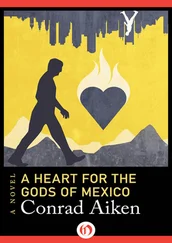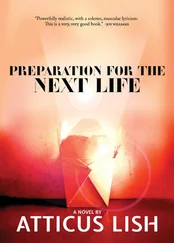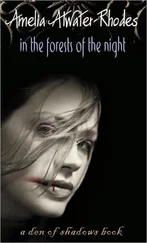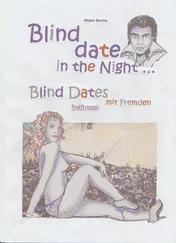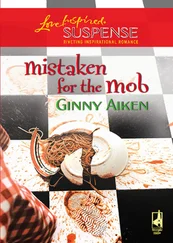The list of minor characters following chapter 9 is adapted with permission from: Arnold Band, Nostalgia and Nightmare: A Study in the Fiction of S.Y. Agnon (Los Angeles: University of California Press, 1968), pp. 294–295.
Bibliography of Works in English on A Guest for the Night
Like all of Agnon’s novels and important stories, A Guest for the Night has been the object of analysis and interpretation by the major scholars and critics of Hebrew literature. Readers who would like to sample some of that body of scholarship and commentary, but are limited to material available in English, would find the following works to be worthwhile.
• The most comprehensive, nearly encyclopedic, book on Agnon in English remains: Arnold Band, Nostalgia and Nightmare: A Study in the Fiction of S.Y. Agnon (Berkeley, CA: University of California Press, 1968). A lengthy overview of the plot, themes, motifs and symbols of A Guest for the Night can be found there in chapter 7, pp. 283–327.
• The only book-length study of this novel in English, with a particular emphasis on the history of the composition of the text, and Agnon’s compulsive revision of his writing over time, can be found in: Stephen Katz, The Centrifugal Novel: S.Y. Agnon’s Poetics of Narrative (Madison, NJ: Fairleigh Dickinson University Press, 1999), 219 pages. Katz also shows how A Guest for the Night sits at the center of a number of interrelated works by Agnon (including “The Doctor’s Divorce”, Shira, A Simple Story, Days of Awe , and stories from the Sefer HaMa’asim collection), and explores how each illuminates the others by a web of latent links.
Book chapters and essays:
Uri Cohen, “Agnon’s Modernity: Death and Modernism in S.Y. Agnon’s A Guest for the Night ,” Modernism/Modernity 13:4 (2006), pp. 657–671 — The novel as a turning point in Agnon’s career; “by examining the sense of death in the novel it is possible to see that by telling the story of his return to Europe, Agnon perceives and laments the death of European Judaism,” leading to an allegorical, post-modern novel with narrative succumbing to death and destruction.
Sidra DeKoven Ezrahi, “Agnon Before and After,” Prooftexts 2:1 (January 1982), pp. 78–94 — In an essay on the impact of the Holocaust on Agnon’s writing, an analysis of the centrality of World War I (as depicted in A Guest for the Night ) as the point of origin of all subsequent catastrophe.
Yael S. Feldman, “How Does a Convention Mean? A Semiotic Reading of Agnon’s Bilingual Key-Irony in A Guest for the Night ,” Hebrew Union College Annual 56 (1985), pp. 251–269 — Explores the key-motif in the novel and its ability to represent the contrariness in: truth vs. deception, authenticity vs. substitution, and continuance vs. annihilation, and Agnon’s ironic ability to generate meanings out of symbols contrary to their expected ones.
Yael S. Feldman, “The Latent and the Manifest: Freudianism in A Guest for the Night ,” Prooftexts 7:1 (January 1987), pp. 29–39 [earlier and lengthier version as conference paper in: Yael S. Feldman, “Agnon’s Freud: From Parody to Suppression” in Modern Hebrew Literature in English Translation , ed. L. Yudkin (New York: Markus Wiener Publishers, 1987), pp. 119–138] — Analyzes the manifestations of Freudianism in A Guest for the Night ; role played by the key motif in establishing the ironic or grotesque symbolism in the novel; Agnon’s accommodation of his playful paradoxes and ironic statements in the novel; comparison between Freud’s theorizing principle and Agnon’s narrative.
Harold Fisch, S.Y. Agnon (New York: Frederick Ungar Publishing, 1975), chapter 4, pp. 44–53 — Plot summary and discourse on centrality of time in Agnon’s works; how “our childhood lives with us in the present.”
Zilla Jane Goodman, “Israel as Redemption in S.Y. Agnon’s A Guest for the Night ” in The Holy Land in History and Thought , ed. M. Sharon (Leiden: E.J. Brill, 1988), pp. 150–162 — Analysis of the central motifs and symbols (key, home, Israel, e.g.) as embodiments of the book’s themes: the separateness and unity of all things.
Natasha Gordinsky, “Time Gap: Nostalgic Mode in Hebrew Modernism,” Simon Dubnow Institute Yearbook 11 (2012), pp. 443–464 — Comparison of A Guest for the Night with Lea Goldberg’s And This Is the Light (Toby Press, 2011), two novels of fictional homecomings, induced by biographical circumstances of longing for lost hometowns, but also by aesthetic and political choices.
Baruch Hochman, The Fiction of S.Y. Agnon (Ithaca, NY: Cornell University Press, 1970), chapter 5, pp. 112–133 — Plot summary and critique of the personality of the Guest; attention to role of poverty in the society depicted; treatment of how the world of the European shtetl and town is contrasted to new Jewish life in Palestine throughout the novel.
Anne Golomb Hoffman, Between Exile and Return: S.Y. Agnon and the Drama of Writing (New York: SUNY Press, 1991), chapter 5, pp. 77–103 — The restorative task of the Guest in the town, through careful analysis of speech, text and intertextuality throughout the novel, correlating these themes as they reach their apex in this novel with some of Agnon’s other writings.
Zipora Kagan, “Halachah and Aggadah as a Cultural-Poetic Code in A Guest for the Night by S.Y. Agnon,” Trumah 10 (2001), pp. 15–30 — Deciphering the various functions of Jewish legal and cultural aspects of Rabbinic literature as a condition for the reader to enter the dialogue of A Guest for the Night , especially as it relates to themes of death in the novel.
Jeffrey Saks, “Agnon’s Shaking Bridge and the Theology of Culture” in Developing a Jewish Perspective on Culture , ed. Y. Sarna (Jersey City: Yeshiva University Press/Ktav, 2013). pp. 143–167 — As part of an essay on Agnon’s religious expression, analysis of A Guest for the Night as an exemplar of his treatment of the theme of tradition in flux.
Gershon Shaked, Shmuel Yosef Agnon: A Revolutionary Traditionalist (New York: New York University Press, 1989), pp. 137–146 — Brief plot summary and analysis of the dual voices in the novel: A conservative strain marked by the persistence of Agnon’s balanced rabbinic style and many Jewish symbols, twinned with a “revolutionary” literary impulse in its “complex structure and composition of the novel and in the complex relationship between the implied author and the first-person narrator and witness.”
Naomi B. Sokoloff, “Metaphor and Metonymy in Agnon’s A Guest for the Night ,” AJS Review 9:1 (Spring 1984), pp. 97–111 — Explores relevance of Roman Jakobson’s theories as they relate to Agnon’s multiple meanings in this novel, and how that forms a collective experience for the many characters and episodes related.
Judith Romney Wegner, “ A Guest for the Night : Epitaph on the Perished Hopes of the Haskalah” in Tradition and Trauma: Studies in the Fiction of S.J. Agnon , ed. D. Paterson and G. Abramson (Boulder, CO: Westview Press, 1994), pp. 107–127 — A Guest for the Night as historical criticism, depicting multiple failed responses of 19 thcentury Judaism to the Jewish Enlightenment movement, and Agnon’s statement on the inability to find a sustaining replacement to traditional Jewish culture (until the advent of Zionism).
Aryeh Wineman, “Agnon’s Forest: The Case of ’Ore’ah Nata Lalun ,” Hebrew Annual Review 7 (1983), pp. 251–257 — Analysis of the much-overlooked forest-motif in this novel and in other Agnon short stories; forest (scene of the narrator’s frequent strolls) and nature as contrasted to civilized town as well as the House of Study, and the Torah-culture it embodies.
Читать дальше

